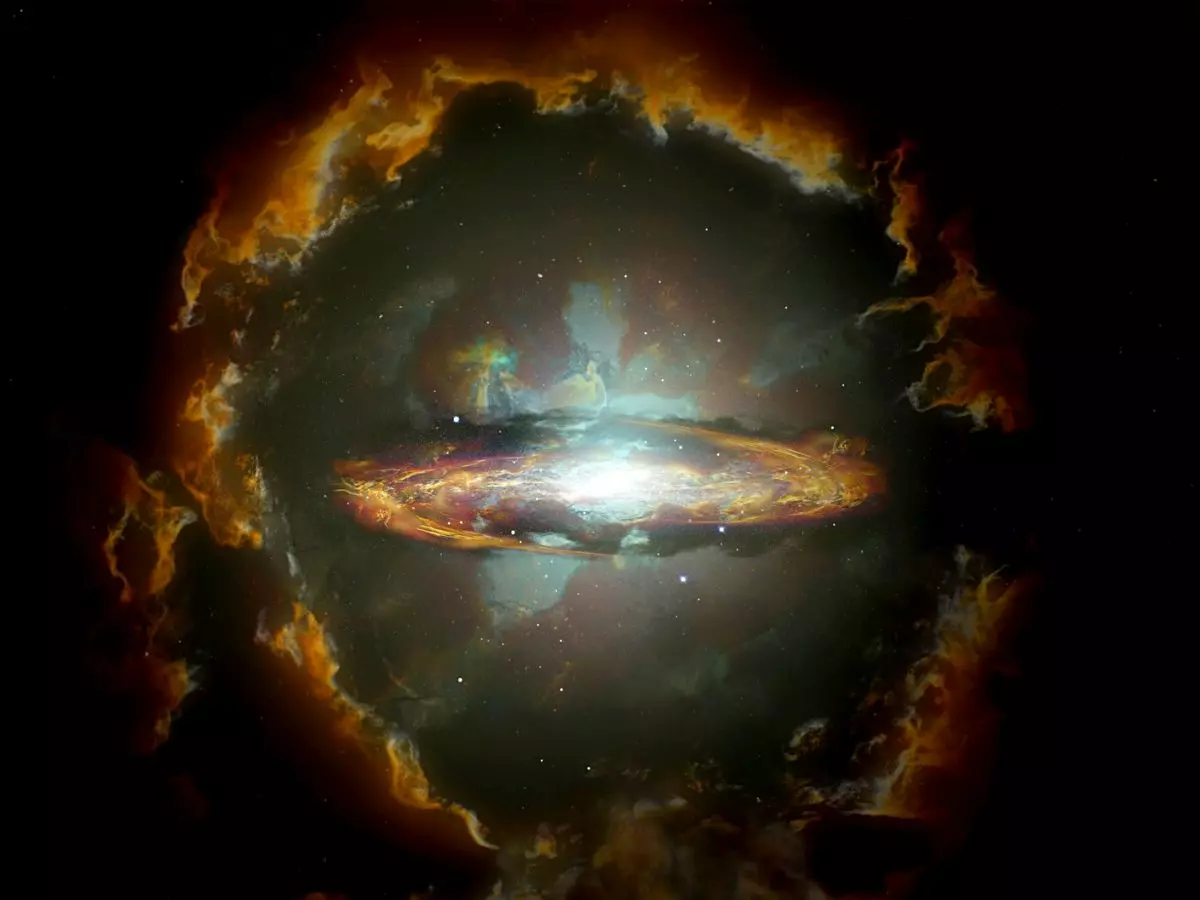12 Billion Year Old Galaxy Discovery May Change What We Know About Galaxy Formation
Scientists have found a massive galaxy that will add to their knowledge

Astronomers looking into the dark yet beautiful abyss of our universe have discovered a massive galaxy in the form of a disc, which was formed a whopping 1.5 billion years after the Big Bang happened.
This discovery of this Wolfe Disk galaxy could help astronomers and physicists better understand the mysteries of the galaxy.
 An artist¡¯s impression of the Wolfe Disk: NRAO
An artist¡¯s impression of the Wolfe Disk: NRAO
Reported first by Space.com, conventionally, galaxy formation models claim that galaxies are built with a dark matter halo in the beginning. As time goes by, the halo starts to pull gases and material while creating full-fledged galaxies.
Disk galaxies (like our very own Milky Way) forms discs of stars and gas in the process to create a method dubbed ¡®hot mode¡¯ galaxy formation where the gas falls inwards, towards the galaxy¡¯s centre. This is where this ¡®hot¡¯ mode cools and condenses.
This is known to be a slow and gradual process, or so was the case, until the discovery of ¡®Wolfe Disk¡¯ where scientists discovered that the novel galaxy (called DLA0817G) and saw that this formation could be quite quick.
The observations for the Wolfe Disk were made using ALMA -- the Atacama Large Millimeter/submillimeter Array in Chile. Researchers found that the object was a large, stable rotating disk, and around 70 billion times the mass of our sun.
Author Marcel Neeleman explains, ¡°Most galaxies that we find early in the universe look like train wrecks because they underwent consistent and often 'violent' merging. These hot mergers make it difficult to form well-ordered, cold rotating disks like we observe in our present universe.¡±
He added, ¡°While previous studies hinted at the existence of these early rotating gas-rich disk galaxies, thanks to ALMA we now have unambiguous evidence that they occur as early as 1.5 billion years after the Big Bang.¡±
 ALMA
ALMA
To put things into perspective, while 1.5 billion years might seem like a lot, it is actually 10 percent of its current age.
This occurrence surely is surprising, and scientists have some idea how this might have formed. They claim that ¡®cold-mode accretion¡¯ could be responsible for this.
J. Xavier Prochaska, of the University of California, Santa Cruz and coauthor of the paper explains, ¡°We think the Wolfe Disk has grown primarily through the steady accretion of cold gas.¡±
Basically it is when the gas falling towards the galaxy¡¯s centre was already cold, so it didn¡¯t take much time to cool down as it approached the galactic centre, making the disc rapidly condense overall.
He concludes, ¡°Still, one of the questions that remains is how to assemble such a large gas mass while maintaining a relatively stable, rotating disk.¡±
